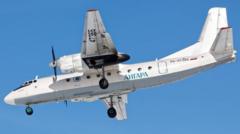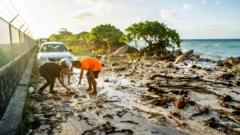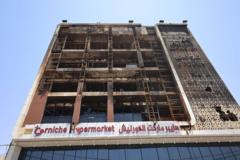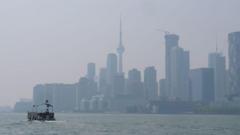A powerful sandstorm swept across central and southern Iraq, leaving more than 1,000 people struggling with breathing difficulties, according to health officials. In Muthanna province alone, at least 700 individuals experienced severe suffocation. Videos circulating social media depicted a thick orange haze enveloping towns and cities, leading to widespread disruptions including power outages and halted air travel across various regions.
Iraq Faces Respiratory Crisis Amid Severe Sandstorm
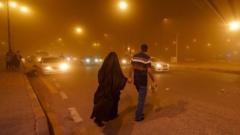
Iraq Faces Respiratory Crisis Amid Severe Sandstorm
A severe sandstorm in Iraq has resulted in over 1,000 cases of respiratory issues, raising alarm among health officials.
Despite being a frequent occurrence in Iraq, experts suggest that these dust storms are increasing in frequency, potentially linked to climate change. The Iraq Environment Ministry issued warnings anticipating more “dust days” in the future.
To protect themselves from the hazardous conditions, citizens and law enforcement personnel donned face masks as paramedics rushed to assist those in distress. Hospitals in multiple provinces reported significant influxes of patients: Muthanna received approximately 700 cases, Najaf over 250, and Diwaniyah around 322, with additional reports of over 530 individuals facing respiratory challenges in Dhi Qar and Basra provinces.
The sandstorm drastically reduced visibility, plummeting to less than one kilometer (0.62 miles) in many affected areas, prompting the closure of airports in Najaf and Basra. Fortunately, local weather services predict a gradual improvement in conditions by Tuesday morning.
The UN classifies Iraq as one of the five countries most at risk from climate change, grappling with frequent sandstorms, extreme heat, and water shortages. Past incidents of severe sandstorms have resulted in casualties, including a 2022 storm that left one person dead and sent over 5,000 to seek medical treatment for respiratory ailments. The Iraq Environment Ministry's outlook suggests that the prevalence of such "dust days" is expected to rise.
To protect themselves from the hazardous conditions, citizens and law enforcement personnel donned face masks as paramedics rushed to assist those in distress. Hospitals in multiple provinces reported significant influxes of patients: Muthanna received approximately 700 cases, Najaf over 250, and Diwaniyah around 322, with additional reports of over 530 individuals facing respiratory challenges in Dhi Qar and Basra provinces.
The sandstorm drastically reduced visibility, plummeting to less than one kilometer (0.62 miles) in many affected areas, prompting the closure of airports in Najaf and Basra. Fortunately, local weather services predict a gradual improvement in conditions by Tuesday morning.
The UN classifies Iraq as one of the five countries most at risk from climate change, grappling with frequent sandstorms, extreme heat, and water shortages. Past incidents of severe sandstorms have resulted in casualties, including a 2022 storm that left one person dead and sent over 5,000 to seek medical treatment for respiratory ailments. The Iraq Environment Ministry's outlook suggests that the prevalence of such "dust days" is expected to rise.




